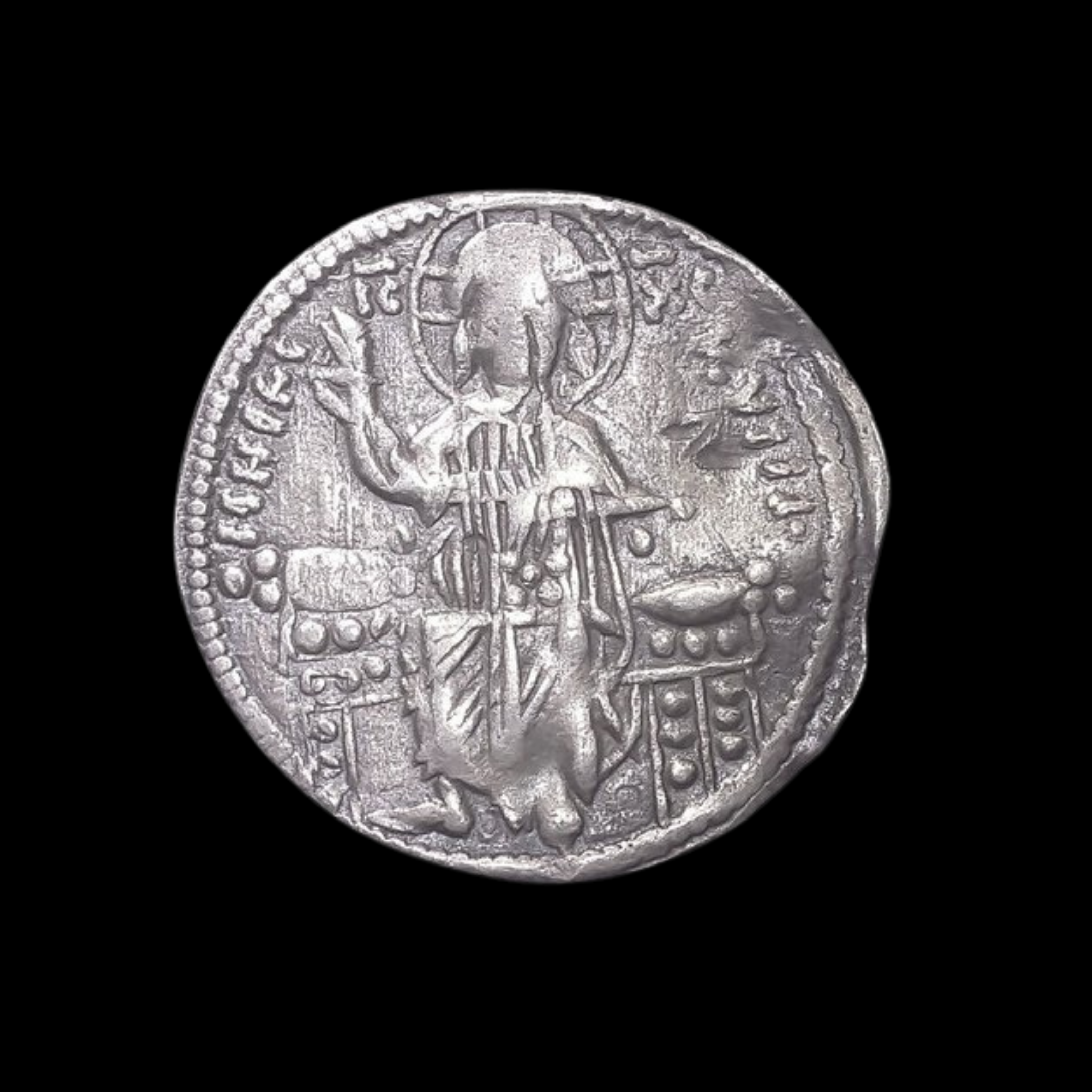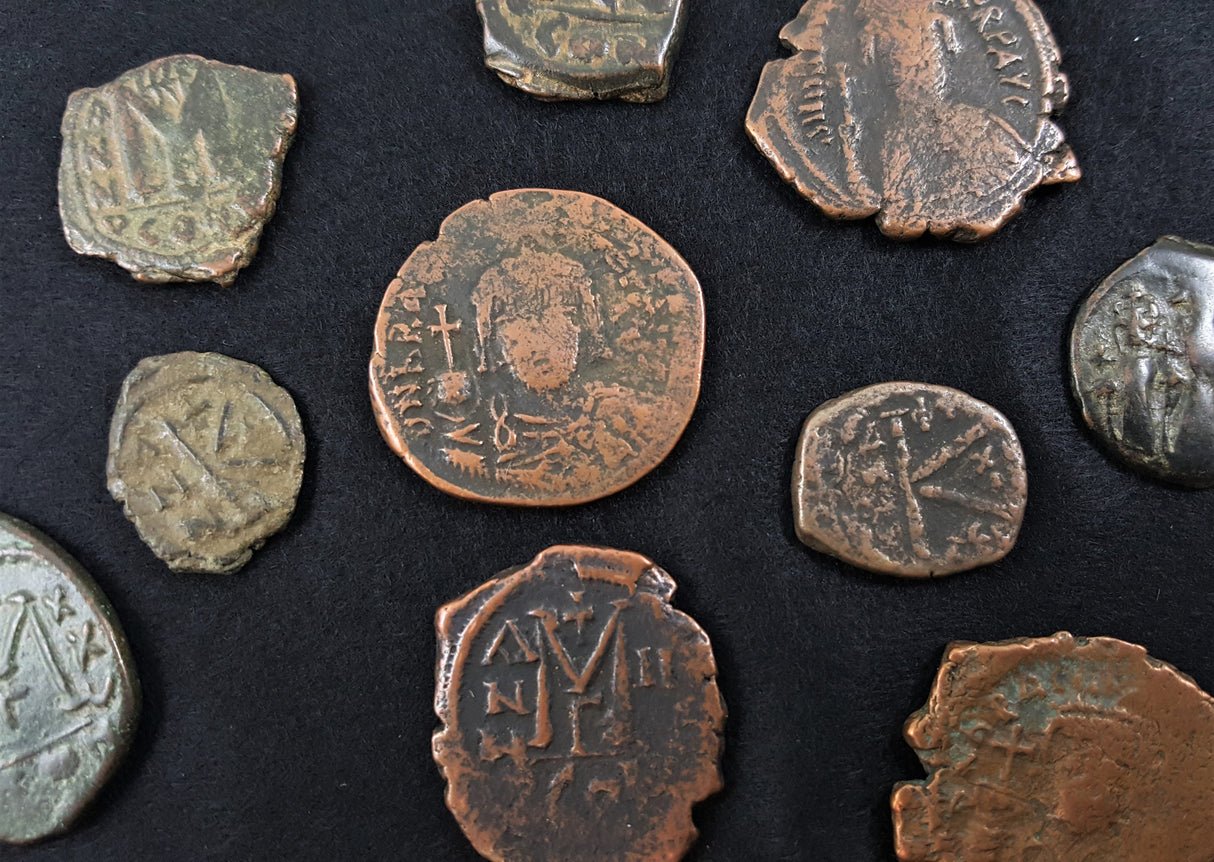 Image 1 of 2
Image 1 of 2

 Image 2 of 2
Image 2 of 2



Byzantine Silver Miliaresion (Silver Coin) of Emperor Nicephorus II Phocas (about 1060 years ago)
Description: This silver miliaresion (Byzantine silver coin) was minted between 963-969 AD in Constantinople (modern Istanbul, Turkey) during the reign of Emperor Nicephorus II Phocas.
Front Side: Likely features a religious inscription or Christian symbolism
Back Side: Probably displays imperial titles and symbols of authority
Technical Details:
Condition: About Extremely Fine
Mint: Constantinople
Historical Significance: Nicephorus II Phocas was a successful Byzantine military leader who became emperor. His reign marked a period of territorial expansion, particularly against the Arab emirates of the east, where he reconquered Crete, Cyprus, and parts of Syria. Known for his military reforms and austere lifestyle, Nicephorus was eventually assassinated in a palace coup led by his nephew and wife. His miliaresia were part of a stable Byzantine monetary system that influenced currency throughout the Mediterranean and Eastern Europe. The religious imagery typically found on these coins reflected Byzantium's identity as a Christian empire and Nicephorus' own deeply religious character.
Description: This silver miliaresion (Byzantine silver coin) was minted between 963-969 AD in Constantinople (modern Istanbul, Turkey) during the reign of Emperor Nicephorus II Phocas.
Front Side: Likely features a religious inscription or Christian symbolism
Back Side: Probably displays imperial titles and symbols of authority
Technical Details:
Condition: About Extremely Fine
Mint: Constantinople
Historical Significance: Nicephorus II Phocas was a successful Byzantine military leader who became emperor. His reign marked a period of territorial expansion, particularly against the Arab emirates of the east, where he reconquered Crete, Cyprus, and parts of Syria. Known for his military reforms and austere lifestyle, Nicephorus was eventually assassinated in a palace coup led by his nephew and wife. His miliaresia were part of a stable Byzantine monetary system that influenced currency throughout the Mediterranean and Eastern Europe. The religious imagery typically found on these coins reflected Byzantium's identity as a Christian empire and Nicephorus' own deeply religious character.
Description: This silver miliaresion (Byzantine silver coin) was minted between 963-969 AD in Constantinople (modern Istanbul, Turkey) during the reign of Emperor Nicephorus II Phocas.
Front Side: Likely features a religious inscription or Christian symbolism
Back Side: Probably displays imperial titles and symbols of authority
Technical Details:
Condition: About Extremely Fine
Mint: Constantinople
Historical Significance: Nicephorus II Phocas was a successful Byzantine military leader who became emperor. His reign marked a period of territorial expansion, particularly against the Arab emirates of the east, where he reconquered Crete, Cyprus, and parts of Syria. Known for his military reforms and austere lifestyle, Nicephorus was eventually assassinated in a palace coup led by his nephew and wife. His miliaresia were part of a stable Byzantine monetary system that influenced currency throughout the Mediterranean and Eastern Europe. The religious imagery typically found on these coins reflected Byzantium's identity as a Christian empire and Nicephorus' own deeply religious character.
Nikephoros II Phokas (Greek: Νικηφόρος Φωκᾶς, Nikēphóros Phōkãs; c. 912 – 11 December 969), Latinized Nicephorus II Phocas, was Byzantine emperor from 963 to 969. His career, not uniformly successful in matters of statecraft or of war, nonetheless greatly contributed to the resurgence of the Byzantine Empire during the 10th century. In the east, Nikephoros completed the conquest of Cilicia and retook the islands of Crete and Cyprus, opening the path for subsequent Byzantine incursions reaching as far as Upper Mesopotamia and the Levant; these campaigns earned him the sobriquet "pale death of the Saracens".
Nikephoros Phokas was born around 912. From his paternal side, he belonged to the Phokas family[2] which had produced several distinguished generals, including Nikephoros' father Bardas Phokas, brother Leo Phokas, and grandfather Nikephoros Phokas the Elder, who had all served as commanders of the field army (domestikos tōn scholōn). From his maternal side he belonged to the Maleinoi, a powerful Anatolian Greek family which had settled in Cappadocia.[3][4] Early in his life Nikephoros had married Stephano. She had died before he rose to fame, and after her death he took an oath of chastity.
Nikephoros joined the army at an early age. He was appointed the military governor of the Anatolic Theme in 945 under Emperor Constantine VII. In 954 or 955 Nikephoros was promoted to Domestic of the Schools, replacing his father, Bardas Phokas, who had suffered a series of defeats by the Hamdanids and by the Abbasids. The new position essentially placed Nikephoros in charge of the eastern Byzantine army. From 955, the Hamdanids in Aleppo entered a period of unbroken decline until their destruction in 1002. In June 957 Nikephoros managed to capture and destroy Adata. The Byzantines continued to push their advantage against the Arabs until the collapse of the Hamdanids, except for the period from 960 to 961, when the army turned its focus to the reconquest of Crete.
You Might Also Like









